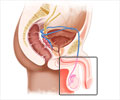A new molecular diagnostic test used at the point-of-care identifies individuals for hypnotherapy recommendations for postoperative pain, potentially lowering the need for opioids.
- The GMR biosensor array can detect the ideal mix of COMT SNPs in patient DNA samples, providing a quick and objective way to identify patients who are likely to benefit from hypnotherapy for pain relief
- The study found that the association between hypnotizability and COMT genotypes was strongest in females, possibly due to interactions between COMT and estrogen. Further research may focus on other gene targets, including COMT, with stratification by sex
- The study emphasizes the potential of evolving precision medicine applications to identify patients who are most likely to benefit from hypnosis as an effective, non-pharmacological treatment that can improve patient comfort while reducing opioid use
Treatments for Pain Management
“Since hypnotizability is a stable cognitive trait with a genetic basis, our goal was to create a molecular diagnostic tool for objectively identifying individuals who would benefit from hypnosis by determining ‘treatability’ at the point-of-care,” explained co-lead investigator Dana L. Cortade, a recently graduated Ph.D. in Materials Science and Engineering, School of Engineering, Stanford University, Stanford, CA, USA. “The advancement of nonpharmacological adjuvant treatments for pain is of the utmost importance in light of the opioid epidemic.” A previous study demonstrated that the genetic foundation for hypnotizability contains four unique single-nucleotide polymorphisms (SNPs), or genetic variants, found in the catechol-o-methyltransferase (COMT) gene, which is important for dopamine metabolism in the prefrontal cortex. Although SNPs can provide useful information about disease risk and treatment response, their general use in clinical practice is limited due to the difficulties, costs, and time delays associated with shipping samples to laboratories for testing.To detect the ideal mix of COMT SNPs in patient DNA samples, the researchers built an SNP genotyping assay on a large magnetoresistive (GMR) biosensor array. GMR biosensor arrays are dependable, inexpensive, sensitive, and simple to use in point-of-care settings with saliva or blood samples.
The study looked at the relationship between COMT diplotypes and hypnotizability using a clinical hypnotizability scale called the Hypnotic Induction Profile (HIP) in people who had taken part in one of three previous clinical trials that used a HIP. For patients from the third cohort who had undergone total knee arthroplasty, an additional exploratory examination of the relationship between perioperative pain, COMT genotypes, and HIP scores was conducted (TKA). DNA was extracted from blood samples provided in the first cohort, and saliva samples were acquired from participants in the other two trials via mail. Individuals with HIP scores of 3 or higher on a scale of zero to ten were judged curable by hypnosis.
The GMR biosensor array detected the optimum COMT diplotypes in 89.5% of the subjects, identifying 40.5% of the curable group. The mean HIP score in the optimal COMT group was considerably greater than that in the subpar COMT group. However, subsequent investigation revealed that the difference was exclusively observed in women.
Gender Disparity in the Association Between Hypnosis and Genotypes
“Although we had expected some difference in effect between females and males, the association between hypnotizability and COMT genotypes was strongest in the females in the cohort,” said co-lead investigator Jessie Markovits, M.D., Department of Internal Medicine, Stanford School of Medicine, Stanford, CA, USA. “The difference may be due to lower numbers of males in the cohort, or because COMT is known to have interactions with estrogen and to differ in activity by sex. Additional gene targets including COMT, with stratification by sex, could be the focus of future study.”The same ideal COMT individuals had significantly higher postoperative pain scores than the sub par group in the exploratory study of the link between COMT genotypes and pain following TKA surgery, indicating a greater need for treatment. "This reinforces the body of data showing COMT genotypes impact pain, and it is also known that COMT genotypes alter opioid use following surgery. "Pain researchers can utilize this technology to correlate genetic propensity to pain sensitivity and opioid usage with response to an evidence-based, alternative treatment: hypnosis," stated Dr. Cortade.
COMT SNPs alone are not a complete biomarker for identifying all persons who are highly hypnotizable and have high pain sensitivity. The GMR sensor nanoarray may hold up to 80 SNPs, and more SNPs, such as those for dopamine receptors, may be required to further stratify individuals.
Use of Hypnosis in Precision Medicine
The researchers note that this study emphasizes the value and potential of evolving precision medicine applications. “It is a step towards enabling researchers and healthcare professionals to identify a subset of patients who are most likely to benefit from hypnotic analgesia,” Dr. Markovits said. “Precision medicine has made great strides in identifying differences in drug metabolism that can impact medication decisions for perioperative pain. We hope to provide similar precision in offering hypnosis as an effective, non-pharmacological treatment that can improve patient comfort while reducing opioid use.”Source-Medindia















